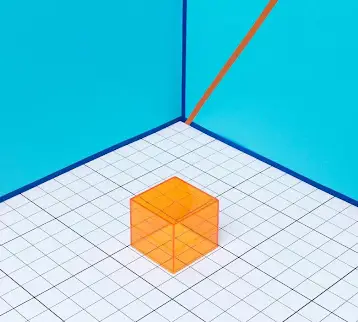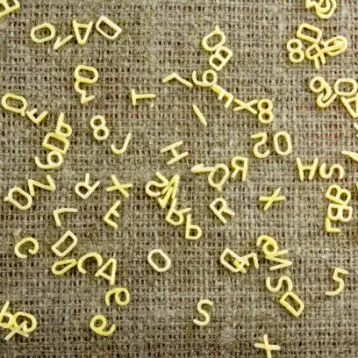Mempile Q&A
Here is a list of questions and answers related to Mempile’s technology and our original article “Mempile – Terabyte on a CD“.
Q: Why red laser and not, green, blue or ultraviolet?
A: Mempile’s TeraDisc technology uses two-photon absorption – together with a unique photo-chromic polymer that has been molecularly engineered to be capable of switching between two distinct states upon the application of light and an addressing laser that interacts substantially only with the layer that is addressed. Mempile’s current discs are using light sensitive molecules (chromophores) engineered to be excited by red lasers. Our research teams are exploring both green and blue lasers and molecules sensitive to these wavelengths.
Q: Why create “versions”; why not start now with the blue laser and a 5TB disc?
A: Our roadmap assumes that blue or green lasers will be used in future products. This technology is still in development and, hence, the first product to hit the market will use red lasers, have 200 virtual layers, and record between 700GB and 1TB per disc.
Q: How long will it take to burn a 1TB disc and what is the read speed?
A: The TeraDisc record technology follows closely to that of DVD red laser technology and speeds are also expected to follow DVDs. This is certainly enough to record live high-def content. Read speed is about double the write speed. As for use in backups, creating the initial backup of a high-capacity hard disk would certainly require at least overnight recording in the background. However, after that, incremental backups are easily supported.
Q: How many times can a TeraDisc be rewritten?
A: TeraDisc is, at this time, a WORM technology supporting multisession recording. Our consumer research has shown that being a multisession WORM technology is not likely to be a problem in that it is easier to just keep writing and then it is to manage the disc in a rewrite mode.
Q: Can you explain the relationship between Mempile technology and the current processing architecture?
A: Mempile’s technology assumes that existing bus architecture and parallel processing guidelines are in effect. However, when game-changing technology comes along it often impacts existing technologies in ways that we cannot really determine. Hence, we would expect that buses, parallel processes, and even search algorithms might be modified as the technology is implemented in order to improve its use.
Q: How does Mempile’s 2-photon technology compare to holographic solutions?
A: Holographic solutions generally require very strict tolerances compared to DVD, as a result prices are higher and the solution is aimed at the high-end professional markets. Holographic drives and discs require greater accuracy in manufacturing and, therefore, have higher costs of production. On the other hand, most holographic systems read and write many bits in parallel (which also increases transfer rates) in order to reach the higher speeds required in these markets. It is difficult too imagine a holographic solution meeting consumer needs and prices at anytime in the near future.
Q: A similar concept was developed in Israel ten years ago and failed. Is Mempile related to that company?
A: There is no relationship between the two companies whatsoever other than that they both originate from Israel. Mempile’s solution is commercially viable. Our understanding of the older solution was that it required many physical layers of different chemical properties – a costly procedure to produce for both disc and drive. Mempile is using one laser to record and read; we have only two physical layers each of which have 100 virtual layers which can be recorded in realtime.
Q: You mention commercialization, can Mempile’s TeraDisc be mass-produced?
A: Mempile is working with its partners, such as Arkema and Memory-Tech, to create a disc that is viable for mass production. That is, the TeraDisc is comprised of an inexpensive polyacrylic that will be able to be injection molded and uses as much of existing drive technology as possible.
Q: Why is the TeraDisc opting to be the same size as a DVD and must that be the case?
A: As mentioned above, Mempile has tried to design everything about its system to allow for ease of commercialization. Thus, the discs are the same size as the DVD. However, there is nothing inherent to that size. If consumers call for smaller and thicker discs, the manufacturers will surely respond accordingly.
Q: Is the disc robust enough for use in the home?
A: Yes, the disc is made of a strong acrylic polymer similar to that of Plexiglas. The top and bottom layers prevent scratches and dust from affecting performance, in the same manner as with DVD. It has been suggested that the TeraDisc be placed in individual cartridges as were the old floppy disks. This is possible and will, as mentioned above, be a market decision. The disc itself is quite robust and able to withstand sunlight, heat and magnetic interference. UV is absorbed by the surface and does not actually reach the data. All tests on the disc have shown a data lifetime in a normal home or business of at least 50 years with no special handling. Unlike many other types of discs, TeraDiscs do not age with time and thus have a long shelf life. Recording on a 10-20-50 year old disc is exactly the same as recording on a new disc; reading your data 50 years after you recorded it would be as simple as reading it today.










